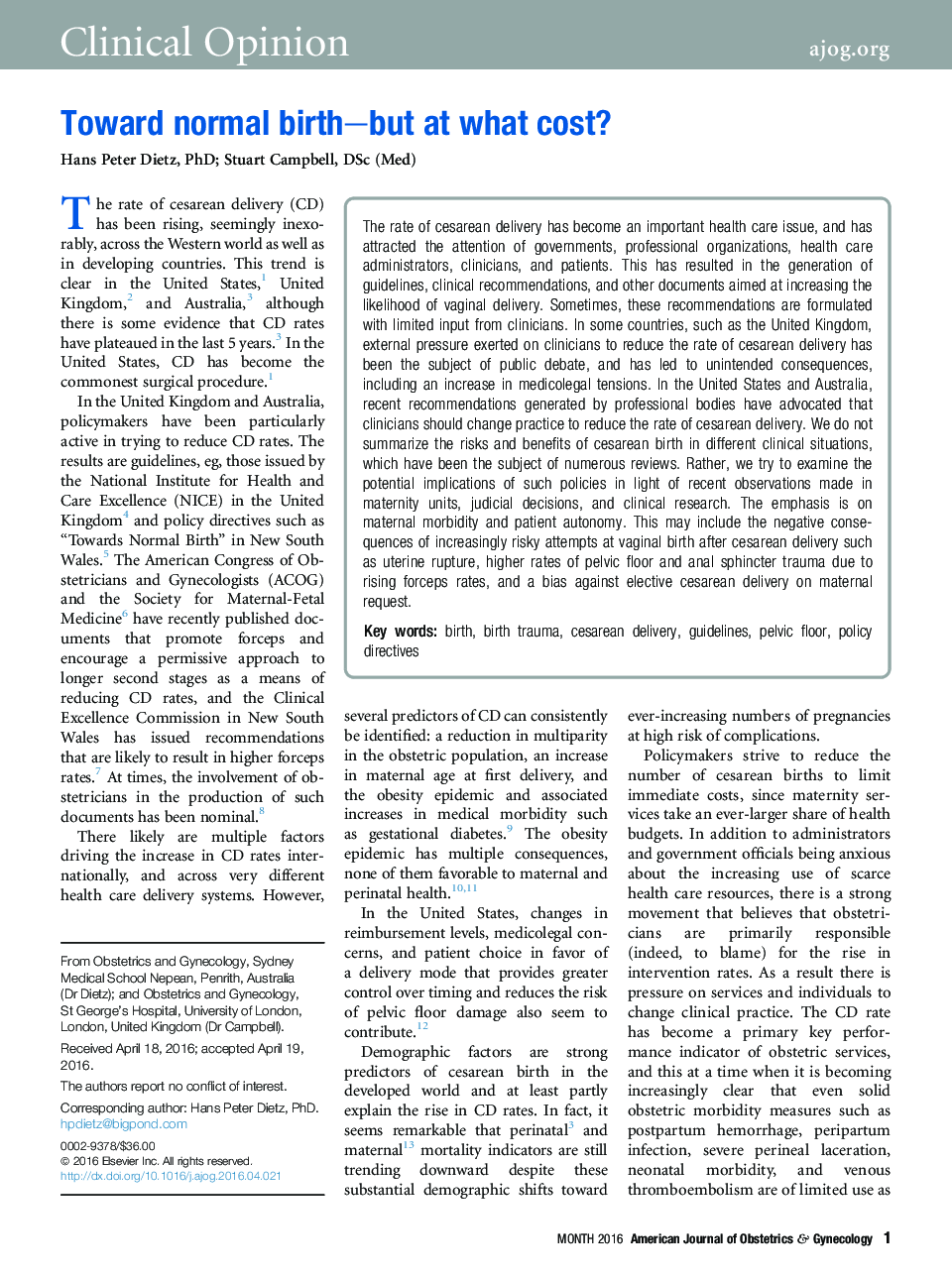| Article ID | Journal | Published Year | Pages | File Type |
|---|---|---|---|---|
| 5676487 | American Journal of Obstetrics and Gynecology | 2016 | 6 Pages |
Abstract
The rate of cesarean delivery has become an important health care issue, and has attracted the attention of governments, professional organizations, health care administrators, clinicians, and patients. This has resulted in the generation of guidelines, clinical recommendations, and other documents aimed at increasing the likelihood of vaginal delivery. Sometimes, these recommendations are formulated with limited input from clinicians. In some countries, such as the United Kingdom, external pressure exerted on clinicians to reduce the rate of cesarean delivery has been the subject of public debate, and has led to unintended consequences, including an increase in medicolegal tensions. In the United States and Australia, recent recommendations generated by professional bodies have advocated that clinicians should change practice to reduce the rate of cesarean delivery. We do not summarize the risks and benefits of cesarean birth in different clinical situations, which have been the subject of numerous reviews. Rather, we try to examine the potential implications of such policies in light of recent observations made in maternity units, judicial decisions, and clinical research. The emphasis is on maternal morbidity and patient autonomy. This may include the negative consequences of increasingly risky attempts at vaginal birth after cesarean delivery such as uterine rupture, higher rates of pelvic floor and anal sphincter trauma due to rising forceps rates, and a bias against elective cesarean delivery on maternal request.
Related Topics
Health Sciences
Medicine and Dentistry
Medicine and Dentistry (General)
Authors
Hans Peter PhD, Stuart DSc (Med),
